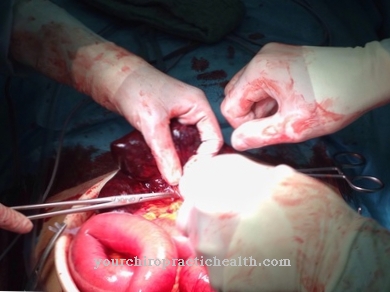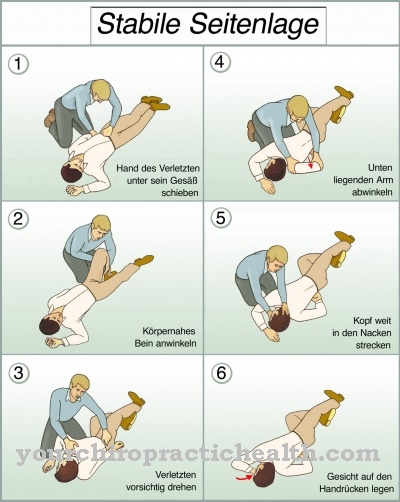With the term analgesia In medicine, the elimination of pain is described. It is a pain therapy with the help of a reduction or interruption of the conduction of excitation or by administering medication.
What is analgesia?

The analgesia In medical terminology, denotes the elimination of pain sensation with the help of drugs or through damage to cells in the central or peripheral nervous system.
The term is often used as a synonym for the term anesthesia, but not all sensations are switched off with analgesia. Certain sensations, such as sensitivity to touch, remain with the patient during analgesia.If there is an injury with severed, sensitive nerve tissue, anesthesia is usually combined with analgesia. Thus, in the case of local (local) analgesia, due to the drugs used, local anesthesia is in principle also used.
Medicinal forms & types
The best known form is probably that drug analgesia. For example, non-steroidal anti-inflammatory drugs (NSAID) with anti-inflammatory and analgesic effects are used to treat pain. These drugs include, for example, active ingredients such as ibuprofen, metamizole or acetylsalicylic acid. Paracetamol (only analgesic, not anti-inflammatory) is similar to the aforementioned active ingredients. These drugs are used to control mild to moderate pain, as well as to treat inflammation and fever.
In most cases, morphine-containing analgesics (opioids such as codeine, fentanyl or tramadol) are used to suppress severe pain, whereby these active substances are usually addictive and therefore fall under the Narcotics Act.
So-called migraine therapeutics (e.g. sumatriptan, ergotamine), which constrict the central blood vessels, as well as adjuvant analgesics (e.g. antidepressants and anti-epileptic drugs) also fall under drug analgesia. The analgesics can be given in the form of tablets, syringes or plasters, depending on the treatment.
Therapeutic forms & types
But not only drugs are part of medicine analgesia. Physical pain therapy with its simplest form - resting or immobilizing the corresponding part of the body - also belongs to this form of treatment.
In addition, this area also includes the promotion of the healing process with the help of exercise therapy or physiotherapy as well as massage or cold or heat applications. Acupuncture also falls into this area of medical treatment, as does electrical stimulation of other stimulus receptors, which ensure that the pain is less perceived by the patient.
Another alternative to drug analgesia is the use of psychology (e.g. autogenic training, hypnosis, suggestion). In extreme emergencies, however, pain can sometimes only be ended if the nerves are severed in neurosurgical treatment.
Not only from a medical point of view does analgesia exist as an insensitivity to pain. Pathological forms of insensitivity to pain are also known. These are caused either by a congenital defect or by injuries (e.g. paraplegia, nerve injuries). Mutations in the SCN9A gene or the CIPA syndrome can be the cause of pathological analgesia.
Advantages & importance
Meanwhile, current developments show that a patient-driven analgesia plays an increasingly important role in today's world. For example, patients with chronic pain can get a pump that allows them to set the dose of the analgesics they need themselves.
This gives patients the feeling that they can influence the existing symptoms themselves and therefore learn to deal better with the disease from a psychological point of view.
So-called patient-controlled analgesia (PCA) offers several advantages in everyday clinical practice both preoperatively, postoperatively and intraoperatively. The pain relief can be tailored to the individual needs of the patient.
You can find your medication here
➔ Medicines for painRisks & side effects
Side effects of PCA are usually very low if you take a closer look at the side effects of conventional pain relief methods. This form of analgesia can relieve the patient of stress prematurely, so that he can be mobilized more quickly. PCA is now of great importance for the patient's recovery, because only a good course of therapy can lead to rapid pain relief.



























